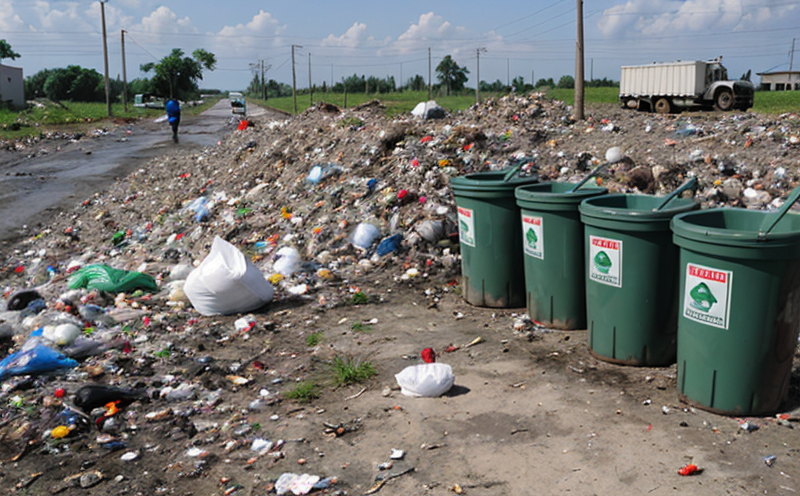ASTM D5744 Acid Generation Potential in Solid Waste Test
The ASTM D5744 test is a critical method used to assess the potential for acid generation from solid waste materials. This test is particularly important for ensuring compliance with environmental regulations and for understanding the long-term stability of waste materials. The methodology involves subjecting solid waste samples to controlled conditions that simulate landfill environments, specifically focusing on moisture content and temperature.
The primary objective of ASTM D5744 is to measure the amount of acid (sulfuric and nitric acids) generated by the decomposition process within a given time frame. This test helps in predicting whether the waste will produce potentially harmful acidic compounds that can leach into groundwater or soil, thus posing environmental risks. The test results are essential for landfill operators, waste management companies, and regulatory bodies to make informed decisions about waste disposal practices.
The ASTM D5744 methodology involves several key steps: sample preparation, conditioning the samples under controlled conditions (typically at 68°F ±2°F), and then incubating them over a period of up to 90 days. During this time, any acidic compounds produced are analyzed using titration or potentiometric methods. The results provide quantifiable data on the acid generation potential, expressed in milliliters of neutralizing solution required per kilogram of waste.
This test is particularly relevant for solid waste materials that may contain organic matter capable of undergoing chemical breakdown over time. Common types of waste examined include municipal solid waste (MSW), construction and demolition debris, and hazardous waste. By assessing the acid generation potential, stakeholders can better manage waste to minimize environmental impact.
The ASTM D5744 test is part of a broader suite of tests designed to evaluate the biodegradability and stability of waste materials. It complements other methods such as the OECD 301 series or EN ISO standards for biodegradation testing, providing additional insights into waste behavior under specific conditions.
In conclusion, ASTM D5744 is an essential tool in environmental testing that helps ensure compliance with regulatory standards and supports sustainable waste management practices. Its ability to predict the acid generation potential of solid waste materials makes it indispensable for various stakeholders involved in waste handling and disposal.
Benefits
- Identifies potential environmental risks associated with waste material disposal.
- Supports compliance with international environmental regulations.
- Aids in the development of safer and more sustainable landfill management strategies.
- Provides valuable data for risk assessment and decision-making processes.
- Facilitates the identification of waste materials that may require special handling or treatment.
- Enhances understanding of waste behavior under controlled conditions, leading to better resource management.
Why Choose This Test
- The ASTM D5744 test provides critical insights into the long-term stability and potential environmental impact of solid waste materials, which is crucial for regulatory compliance.
- It offers a standardized method that ensures consistent results across different laboratories, enhancing reliability in data interpretation.
- This test helps identify waste types with high acid generation potential, enabling targeted management strategies to mitigate risks effectively.
- The methodology used aligns with international standards, making the test results widely accepted and recognized globally.
- ASTM D5744 supports research and development efforts in identifying more sustainable waste disposal methods by providing data on material behavior under specific conditions.
Competitive Advantage and Market Impact
By leveraging the ASTM D5744 test, organizations can gain a competitive edge in several ways:
- Regulatory Compliance: Ensuring that waste management practices meet stringent environmental regulations helps avoid penalties and fines.
- Risk Management: Early identification of potentially problematic waste materials allows for proactive strategies to mitigate risks, reducing the likelihood of costly remediation efforts.
- Sustainability: The test supports the development of more sustainable practices in waste management, which is increasingly important as environmental concerns grow.
- Innovation: By understanding material behavior under specific conditions, organizations can innovate and introduce new technologies or processes that enhance sustainability.
The ASTM D5744 test also has a significant market impact. It influences the design of waste management facilities, the choice of landfill sites, and the selection of materials for disposal. By providing accurate data on acid generation potential, it helps drive more informed decisions that can lead to long-term environmental benefits.





